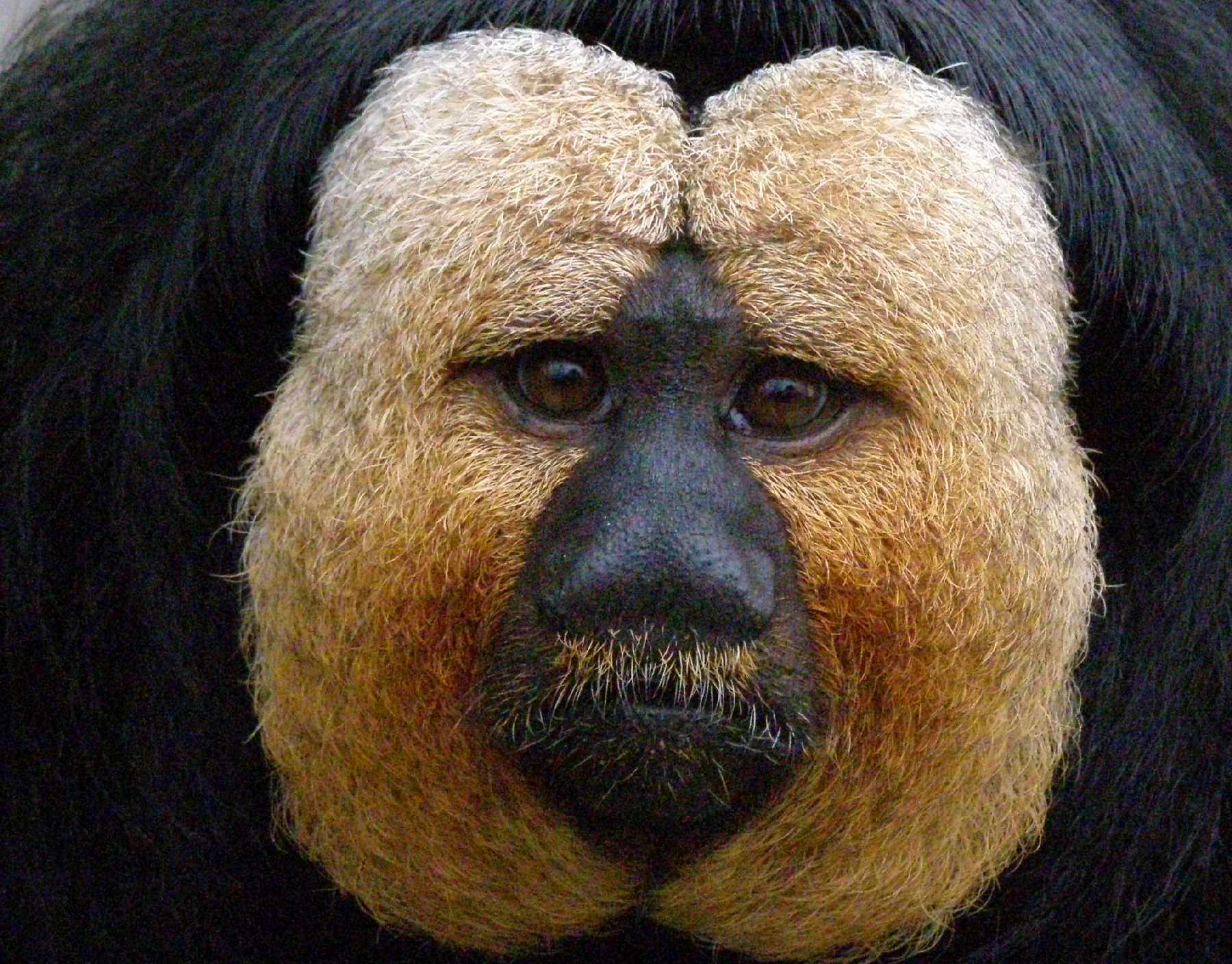The saki, or “flying monkey,” a mid-sized South American primate, gets its nickname from its ability to quietly skim through the tops of trees. These rainforest inhabitants use their sharp teeth to open hard seeds and spread them as they travel through the canopy, making them an important part of the ecosystem.
But one species of saki monkey with distinct golden arms has fallen off the scientific map. Ecuadorian naturalists first collected Vanzolini’s bald-faced saki (Pithacea vanzolinii) in the 1930s and sent specimens to natural history museums. But it hasn’t been seen since.
Now, ecologist Laura Marsh and her international team of scientists are attempting to rectify this. On February 1st, they boarded a houseboat and embarked on a four-month expedition in a remote part of the Brazilian Amazon to try to find the lost saki.
Expedition leader Marsh rewrote the saki monkey genus in 2014, discovering five new species in the process.
“I was able to name whole new species because I had living evidence of them, some from tourist photos that I could corroborate with museum specimens,” Marsh said. This is not always done in classical taxonomy, but she felt having living representatives was key to determining new species.
But she could find no recent evidence of Vanzolini’s bald-faced saki.
“I have no reason to believe they aren’t still there and that we won’t find them,” she said. The museum specimens remain the only known record of the species, and their conspicuous absence is puzzling to the researchers.
Little information exists on the ecology and biology for any of the 16 recognized species of saki monkey. Vanzolini’s bald-faced saki is classified as “data deficient” by the International Union for Conservation of Nature (IUCN) because of a lack of scientific data on the population and potential threats. If the researchers are able to find the species, they will collect data on its behavior, habitat, and population to help determine its conservation status.
Pristine Habitat
The expedition, dubbed “Houseboat Amazon,” will take place in a 43,000-square mile triangle that encompasses the Alto Rio Juruá watershed and extends from Cruzeiro do Sul to Eriunepe in the northwestern Brazilian states of Acre and Amazonas. Data from Global Forest Watch shows that the area is still primarily covered in intact forest and large enough to maintain native levels of biodiversity.
The region potentially harbors more than 600 species of birds, 200 species of mammals, and countless reptiles, amphibians, insects, and plants. However, the specific watershed that will be surveyed by the team has never been the subject of a discovery-type expedition or mammal survey. Researchers believe new scientific discoveries are likely.
While the region is remote, Marsh and her colleagues are still concerned for the future of this biodiversity hotspot. Deforestation fueled primarily by agricultural expansion is creeping ever-northwards from the northwest periphery of an area of particularly high forest loss.
Deforestation activities are so rampant in this area that it has been termed the “arc of deforestation” by conservationists; it stretches thousands of kilometers across Brazil from Belém on the Atlantic coast to near the country’s border with Peru.
The region where the expedition is taking place is still largely covered in intact forest landscapes, which are areas of original vegetation that are large and undisturbed enough to retain their native levels of biodiversity.
But data from the University of Maryland’s Global Land Analysis and Discovery (GLAD) lab show deforestation activities increasing in the region, with a 20% increase in tree cover loss alerts from 2015 to 2016.
While a portion of the study area lies in the state of Acre, which Marsh says has some of the most innovative environmental and sustainable development policies in the Amazon region, much of the Alto Rio Juruá watershed lies in Amazonas and is managed “like the wild west.”
She told that proposals to incorporate parts of the Alto Rio Juruá watershed into Brazil’s National Forest system would allow for timber extraction and road building in currently intact forests.
“This is a corner of the Amazon that hasn’t been well documented or monitored. In addition to climate change and this being a big drought year, threats will come in if we are not paying attention,” Marsh said.
The expedition researchers hope to get ahead of the encroaching deforestation and use their discoveries and data to set conservation priorities for the area.
Alejandra Duarte, an anthropologist and primatologist from Mexico joining the expedition will survey local villages along their route regarding hunting, fishing and forestry practices, and their thoughts about establishing a new protected area.
New Conservation Symbol?
The team hopes that Vanzolini’s bald-faced saki will become a flagship species for creating a new sustainable development conservation area in the watershed. Expedition partner organization Mamirauá Institute for Amazon Conservation created the first such conservation area in northern Amazonas.
Indigenous and subsistence communities that live within the Mamirauá Sustainable Development Reserve monitor their own hunting and fishing activities.
“The preserve is one of the largest in the world and very successful. If it sounds too good to be true, I’ve seen their data, its tremendous,” said Marsh, who hopes to replicate the model.
While the saki monkey is the target species of the expedition, the interdisciplinary research team from Mexico, Brazil, Colombia and the U.S. will also conduct a wall-to-wall biological survey. They will collect data on birds, reptiles, bats and other mammals during the high-water season when animals are more confined to the canopy.
Using a houseboat as their base and field station, the team will set out each morning aboard canoe-style motor boats to survey the forest canopy and riparian areas. In addition to muddy boots on the ground, they will use GoPros, conservation drones, AnaBat echolocation recorders, video and still photography to document everything they see and hear.
The expedition also has a big outreach component, with plans to involve local communities along their route and the public around the world. Marsh and other “Houseboat Amazon” researchers will post online videos and photos of their discoveries in near-real time from the Amazon.
“We want people to be able to experience the rainforest with us and see that real science is also real adventure,” Marsh said.
Citations:
Greenpeace, University of Maryland, World Resources Institute and Transparent World. “Intact Forest Landscapes. 2000/2013” Accessed through Global Forest Watch on February 2, 2017. www.globalforestwatch.org
Hansen, M.C., A. Krylov, A. Tyukavina, P.V. Potapov, S. Turubanova, B. Zutta, S. Ifo, B. Margono, F. Stolle, and R. Moore. 2016. Humid tropical forest disturbance alerts using Landsat data. Environmental Research Letters, 11 (3). Accessed through Global Forest Watch on February 2, 2017. www.globalforestwatch.org
National Institute of Space Research (INPE). “PRODES deforestation.” Accessed through Global Forest Watch onFebruary 2, 2017. www.globalforestwatch.org
This article appeared originally on Mongabay – https://news.mongabay.com/






